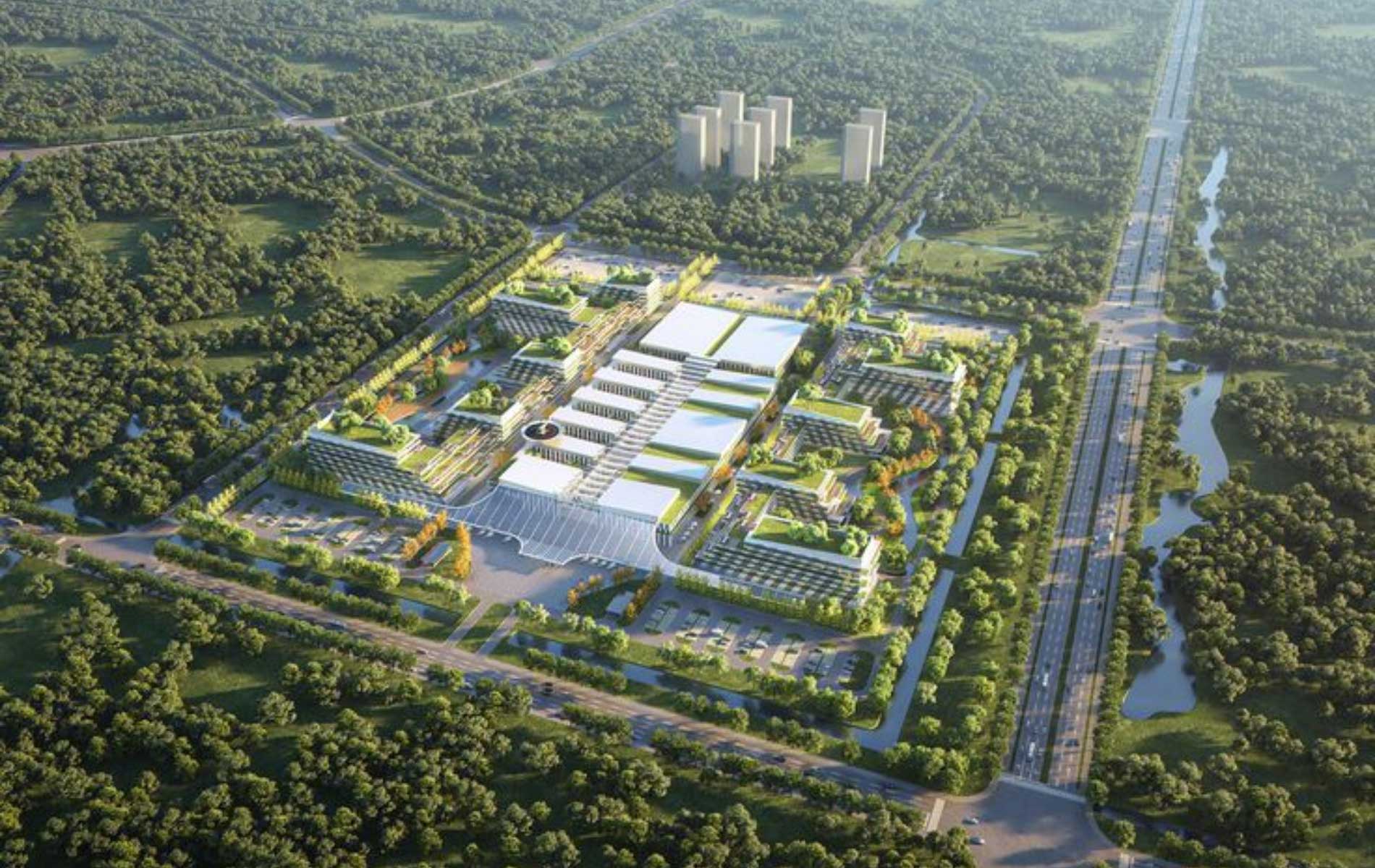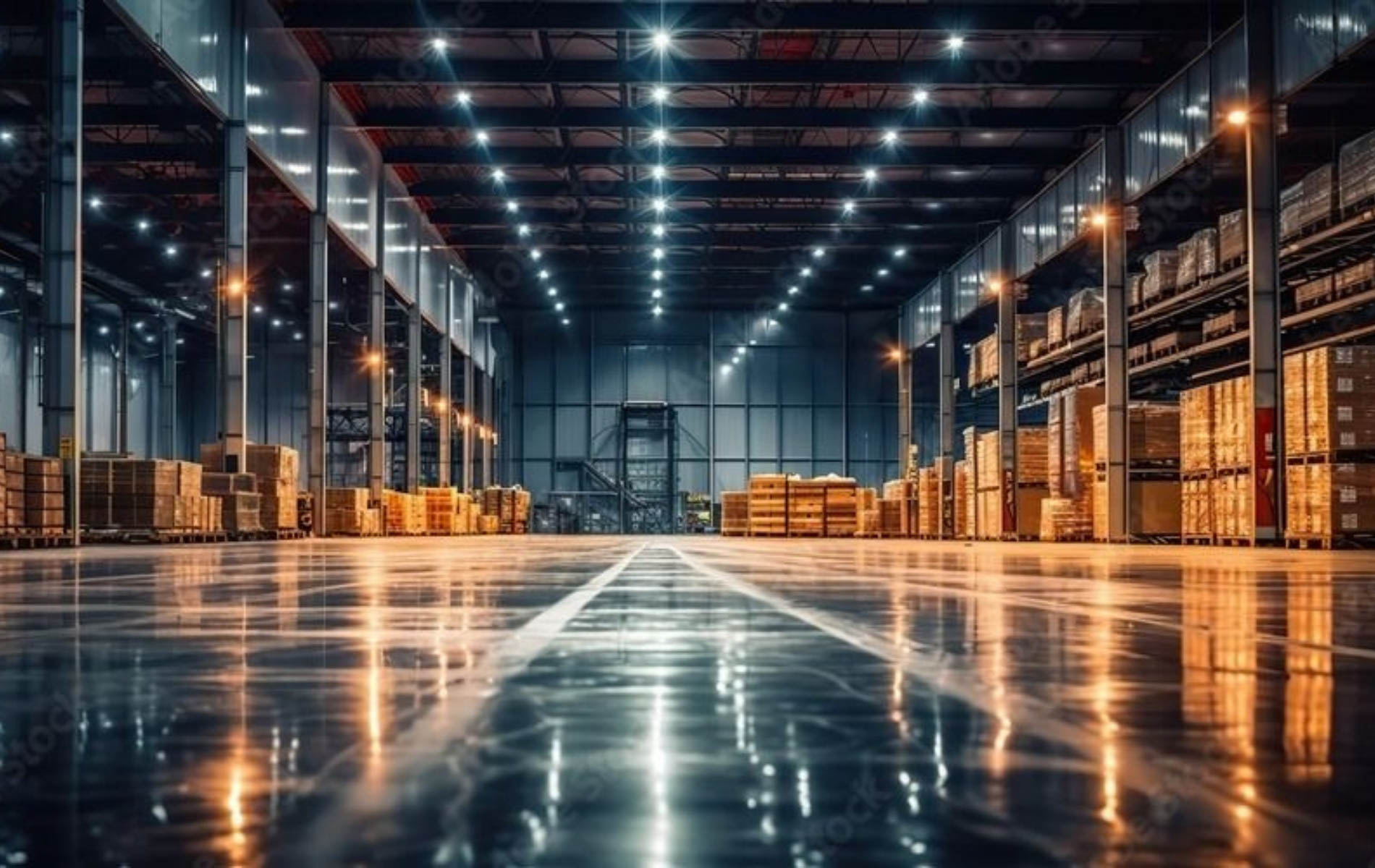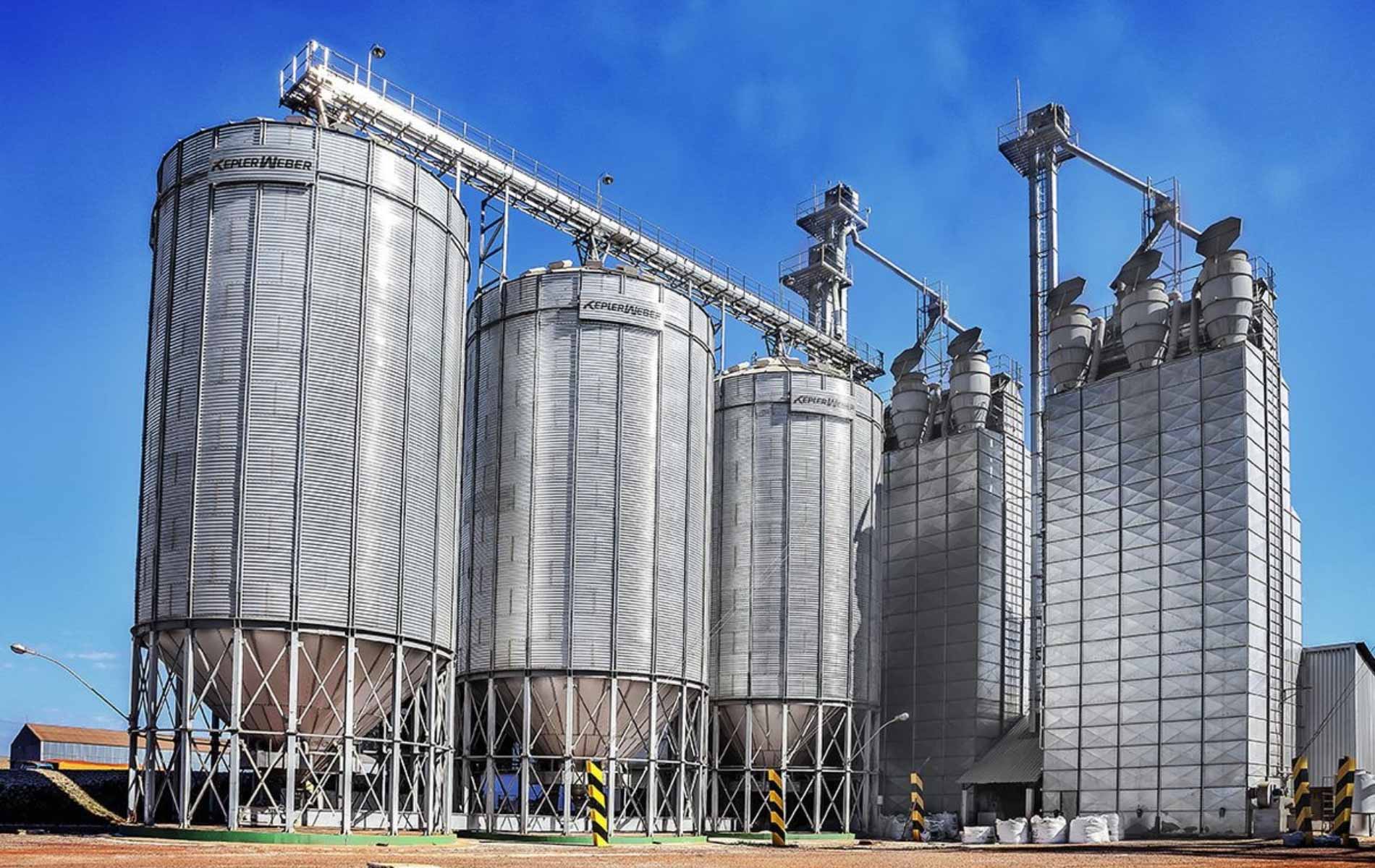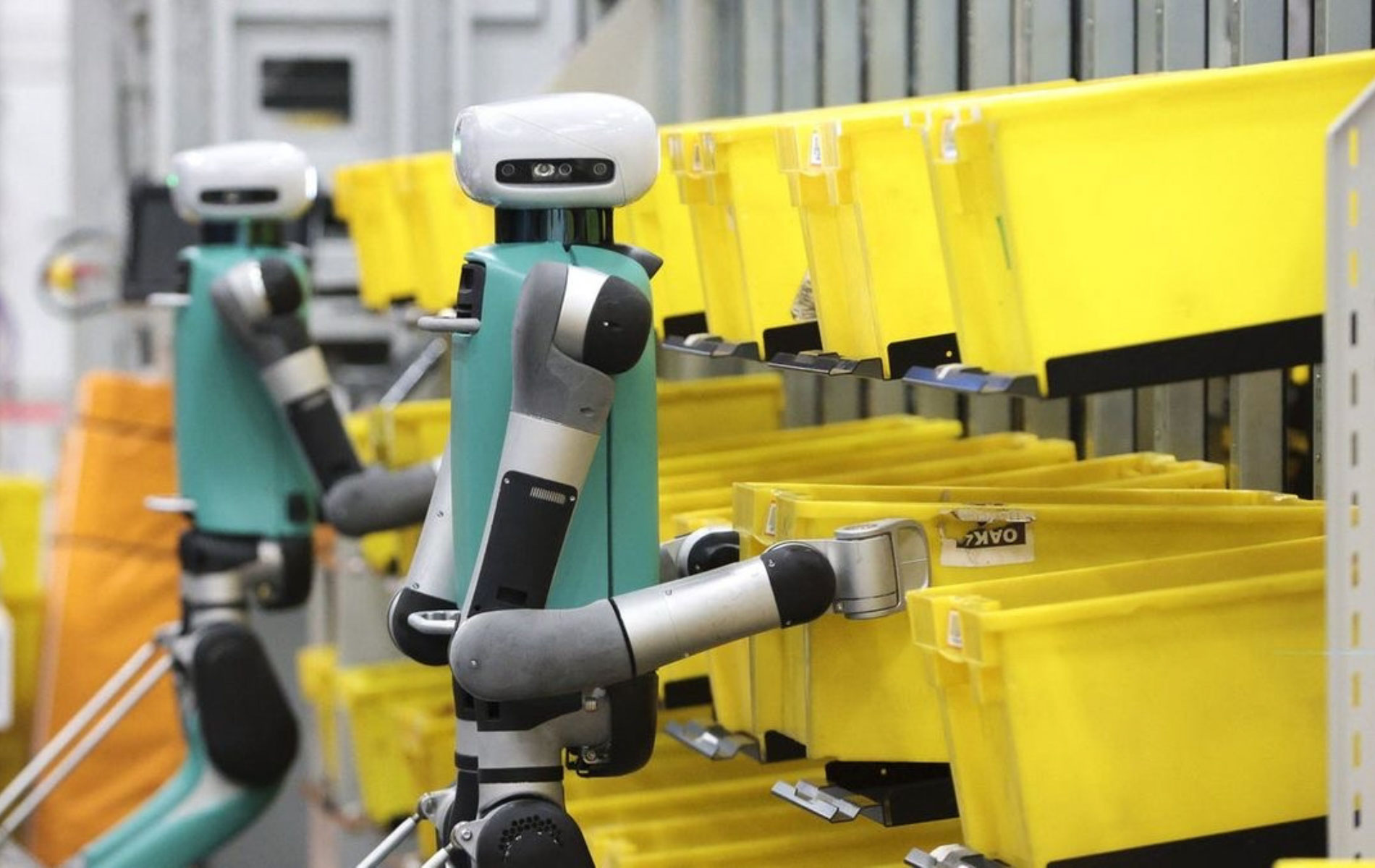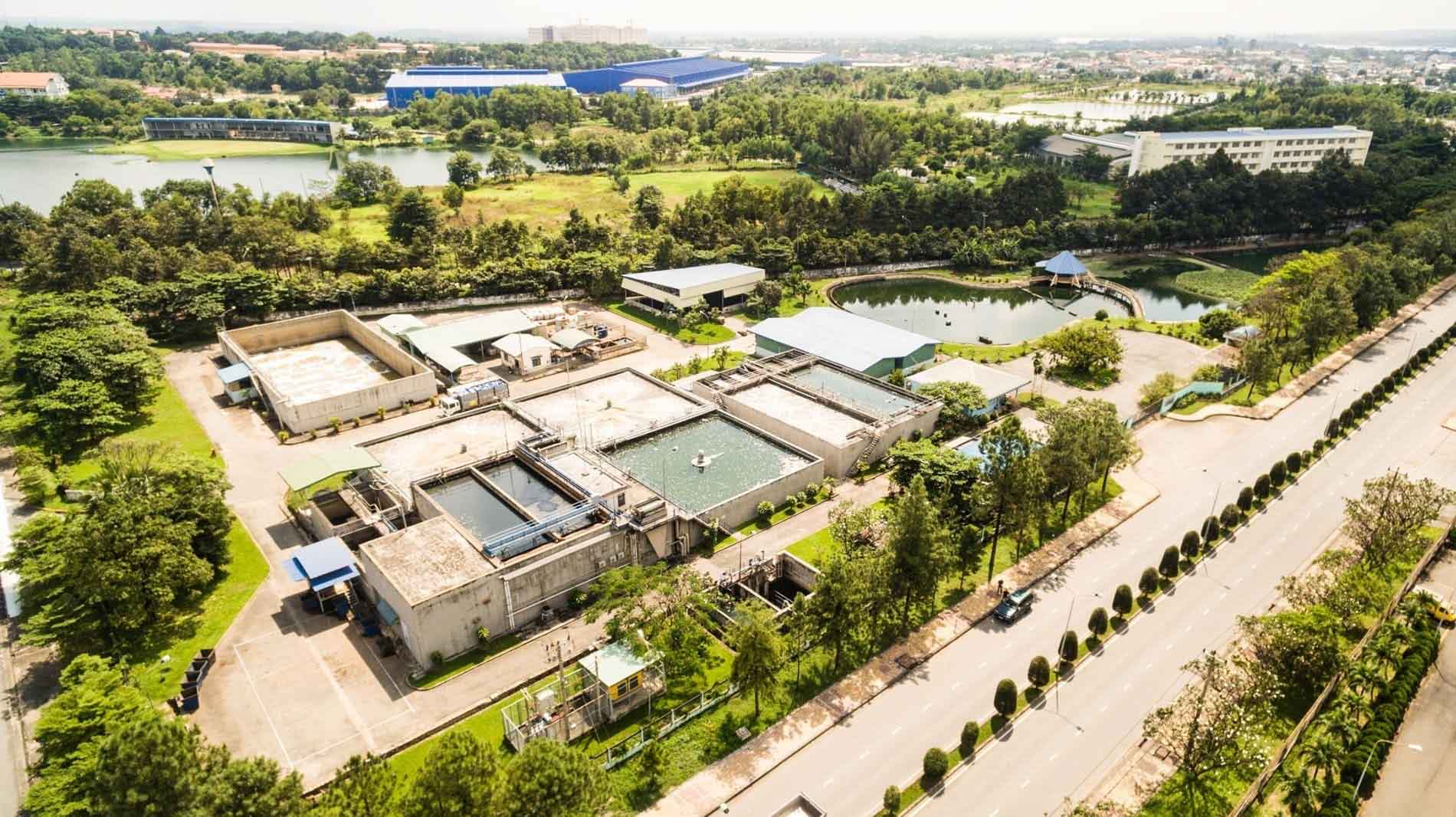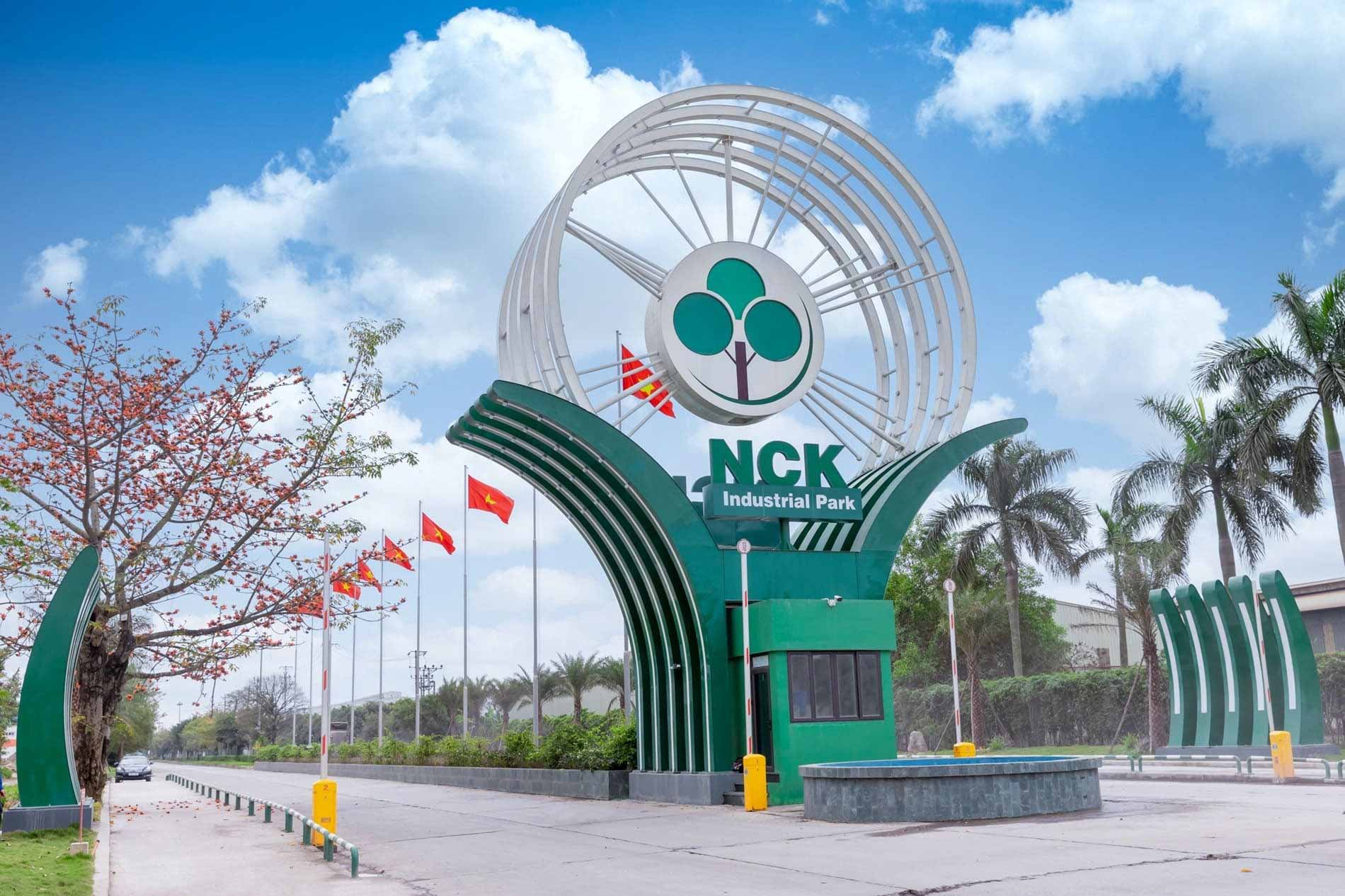The current situation of “limited land, dense population” in major cities and key economic regions is a complex challenge, as the demand for expansion increases but available land is limited. In this context, high-rise factories are gradually establishing themselves as a solution that both saves space and enhances operational efficiency. In this article, KTG Industrial will provide a deeper understanding of this trend in Vietnam.
The trend of developing multi-storey factories in Vietnam
The rapid increase in demand for manufacturing, e-commerce, and logistics services is putting significant pressure on the industrial land supply in Vietnam. Finding suitable spaces is becoming increasingly difficult, not only because of limited availability but also due to escalating rental prices.
According to CBRE Vietnam, in 2024, the industrial land absorption in the southern region is expected to reach only 265 hectares, a 52% decrease compared to 2023, due to the limited land supply in key markets. The average rental price in southern industrial zones has also reached 175 USD/m² for the remaining lease term, marking a 1.4% increase compared to last year.
In this context, multi-storey factories have emerged as a strategic solution, enabling businesses to optimize vertical space usage rather than extending across large areas. This model is not only suitable for industries requiring extensive storage space but is also particularly effective in the context of urbanization. As a result, the distance from production centers to consumption markets is shortened, leading to significant savings in operational costs.
Currently, multi-storey factories are being widely implemented in key industrial areas such as Ho Chi Minh City, Dong Nai, Binh Duong, Long An, Hai Duong, and Bac Ninh—regions that host many export processing zones, industrial parks, and large-scale manufacturing plants. These areas benefit from well-developed transportation infrastructure, offering convenient connections to seaports, airports, and distribution centers, making them ideal locations for maximizing the effectiveness of this model.
What are the prospects for multi-storey factories?
The rise of multi-storey factories is not just a trend; it is gradually becoming an essential part of the industrial and logistics development strategy in Vietnam. At least three core factors are driving the acceleration of this model: The issue of urban land availability, the rapid growth of e-commerce, and the increasingly modernized transportation and industrial infrastructure.
Urban land is becoming increasingly scarce
In major cities and key industrial areas such as Ho Chi Minh City, Hanoi, and Binh Duong, the rapid pace of urbanization is shrinking the land available for industrial use. Available land is becoming more limited, while rental costs continue to rise, forcing businesses to reconsider how to use space more efficiently. As a practical response to this need, multi-storey factories with the ability to expand vertically have emerged as an optimal solution, allowing for space savings while maintaining operational capacity.
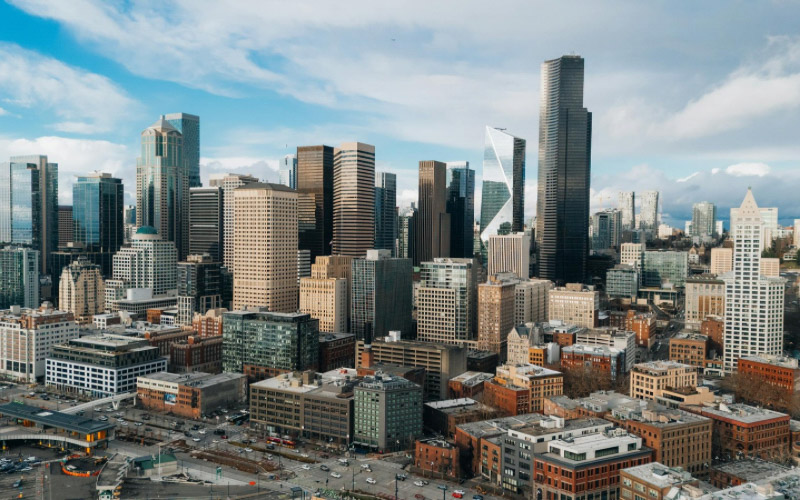
Urbanization is one of the key factors leading to the increasing limitation of industrial land
Read more: Top 7 popular types of industrial factories
E-commerce boom
According to the Ministry of Industry and Trade’s report, in the first nine months of 2024, the total revenue from e-commerce reached over 227 trillion VND, a nearly 38% increase compared to the same period last year. Q3 2024 recorded a revenue of 84.75 trillion VND, contributing 37% to the total annual revenue.
The rapid growth of e-commerce in Vietnam has led to an increased demand for high-speed, large-scale storage, processing, and distribution of goods. Logistics companies require warehouse models located near consumer centers, while also offering flexibility in dividing, transferring, and delivering orders.
Multi-storey warehouses meet these needs well, especially when integrated with automation technologies and smart management. This model not only shortens delivery times but also becomes a crucial competitive advantage in the “same-day delivery” trend.
Furthermore, effectively utilizing space and location helps businesses optimize operational costs, particularly as land near residential areas becomes increasingly scarce and transportation costs account for up to 50% of total logistics expenses.
Related article: Factory Leasing Cost in Southeast Asia: Latest Updates
Modern infrastructure and technology
Investments in infrastructure and the application of technology are playing a key role in creating favorable conditions for the development of multi-storey warehouses in Vietnam. Currently, the highway network continues to expand, with approximately 1,188 km expected to be completed by 2025.
Notable highway projects include the 49 km Bung – Van Ninh section passing through Quang Binh (Central region), and the 83 km Van Phong – Nha Trang expressway in Khánh Hòa (South Central Coastal region). These routes enhance connectivity between industrial zones and seaports and airports, facilitating smoother goods transportation.
Additionally, highways connecting international airports and seaports are forming new economic zones, driving the development of logistics. A prime example is the nearly 300 km Hanoi – Mong Cai expressway, with almost two-thirds of the route running through Quang Ninh. This highway connects industrial zones, cities, three international airports (Noi Bai, Cat Bi, Van Don), and seaports such as Cai Lan and Lach Huyen, helping to expand large-scale economic zones in the North.
Alongside infrastructure development, multi-storey warehouse models are being increasingly supported. Many systems, including goods lifts, ramps, and conveyor systems, are being equipped to optimize operational processes and meet storage demands. Furthermore, modern fire protection technology, such as rescue ladders and emergency evacuation systems for high-rise buildings, is being implemented to ensure worker safety.
3 Notable multi-storey factory projects in 2025
Long Hau multi-storey factory – Long An
The Long Hau multi-storey factory is located in the Long Hau Industrial Park, Long An Province. This project offers flexible leasing solutions, with areas ranging from 100 to 3,300 m², and rental rates that are 10-15% lower than traditional low-rise factory models.
Strategically situated near Ho Chi Minh City, with convenient transportation connections to key routes such as Nguyen Huu Tho, the Ben Luc – Long Thanh expressway, and the seaport and airport systems, this location helps reduce transportation costs and optimize logistics processes.
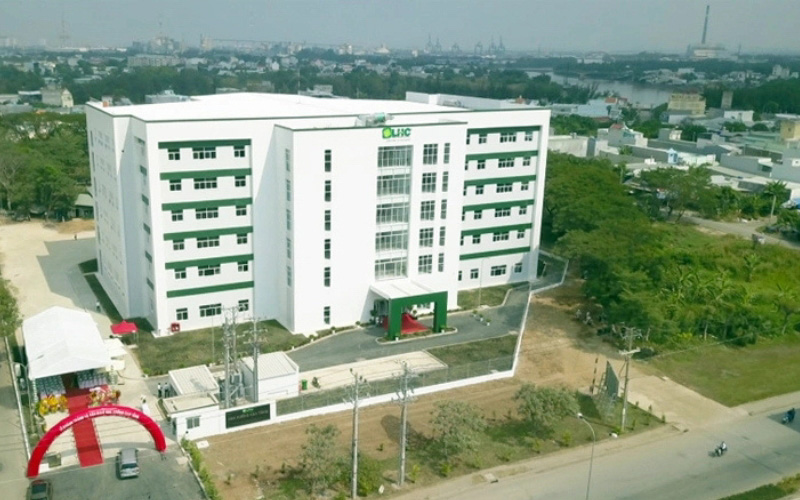
Long Hau multi-storey factory – Long An
High-rise factory lot 100 – Ho Chi Minh City
The High-rise factory lot 100, located within Linh Trung I Export Processing Zone in Ho Chi Minh City, is a modern facility featuring eight floors of factory space with a total construction area of 24,841.6 square meters. Each floor offers 2,790.5 square meters, with floor load capacities ranging from 600 kg/m2 to 1,000 kg/m2 depending on the level, effectively accommodating diverse production needs.
The facility is strategically positioned, just 16 kilometers from the center of Ho Chi Minh City and in close proximity to key infrastructure points, including Tan Son Nhat Airport (13 kilometers), Cat Lai Port (11 kilometers), and Saigon Hi-Tech Park (3 kilometers). It benefits from a well-connected transportation network and flood-free terrain.
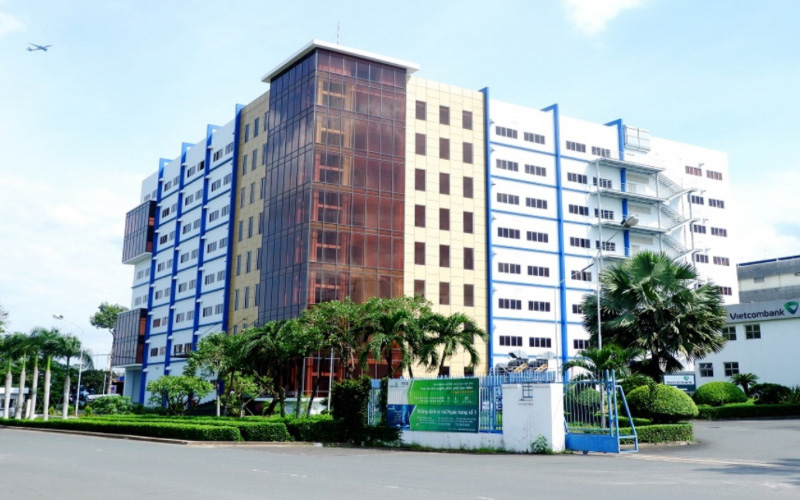
High-rise factory lot 100 – Ho Chi Minh City
KTG Industrial Nhon Trach 2 – Phase 4 (two-story factory)
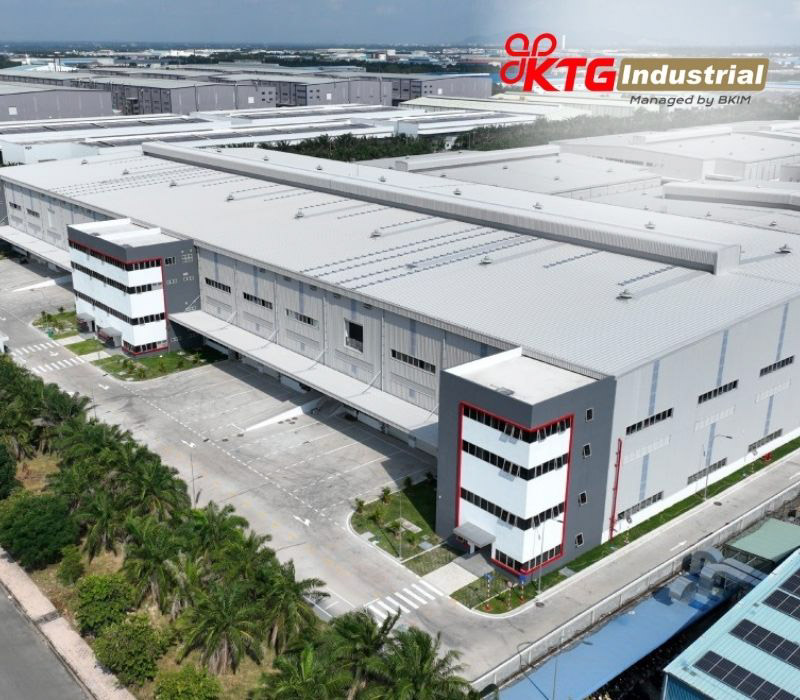
KTG Industrial Nhon Trach 2 (Phase 4)
KTG Industrial Nhon Trach 2 (Phase 4) is the latest expansion of the modern industrial zone in Nhon Trach, distinguished by its efficient two-story factory model that maximizes space utilization. The project spans a land area of 18.69 hectares and is being developed in four phases, with the first two phases already completed and nearly fully occupied.
Strategically located approximately 35 kilometers from the center of Ho Chi Minh City, the project offers rapid connectivity to major urban areas and key transportation infrastructure. With abundant labor resources from neighboring areas such as Thu Duc City, District 2, and Bien Hoa, KTG Industrial Nhon Trach 2 (Phase 4) stands out as an ideal choice for businesses seeking a modern production facility.
What are the differences between warehouses and high-rise factories?
While differing in function, both warehouses and high-rise factories share numerous common advantages, aligning well with Vietnam’s rapid urbanization and the trend toward sustainable industrial development. First, vertical construction allows these facilities to be located closer to urban centers—areas with high consumer density and well-developed transportation networks. As a result, businesses can significantly shorten delivery times and reduce logistics costs.
Secondly, a key shared feature of high-rise warehouses and factories is the optimized and flexible space layout. This enables businesses to easily arrange storage, production, or office areas according to their specific operational needs. Notably, this model is particularly well-suited to light and clean industries such as electronics, packaged food, cosmetics, and pharmaceuticals.
Moreover, the reduced land footprint helps minimize environmental impact, conserve energy by shortening operational supply chains, and improve infrastructure utilization efficiency. Collectively, these factors contribute to enhanced cost-effectiveness and promote a greener, more sustainable path for industrial development.
High-Rise Factories
High-rise factories are a production facility model designed to maximize vertical space usage, rather than spreading horizontally like traditional factories. This model typically features multiple floors, with each level capable of serving different production functions or being shared among various businesses. High-rise factories are commonly found in densely populated urban areas and industrial zones.
With a modern and flexible design, high-rise factories offer numerous outstanding advantages. This model optimizes space utilization, enhances operational efficiency, and helps reduce costs.
In addition, integrated security systems ensure the safety of production activities, while internal transportation networks, maintenance services, and technical support further contribute to the operational efficiency of high-rise factories.
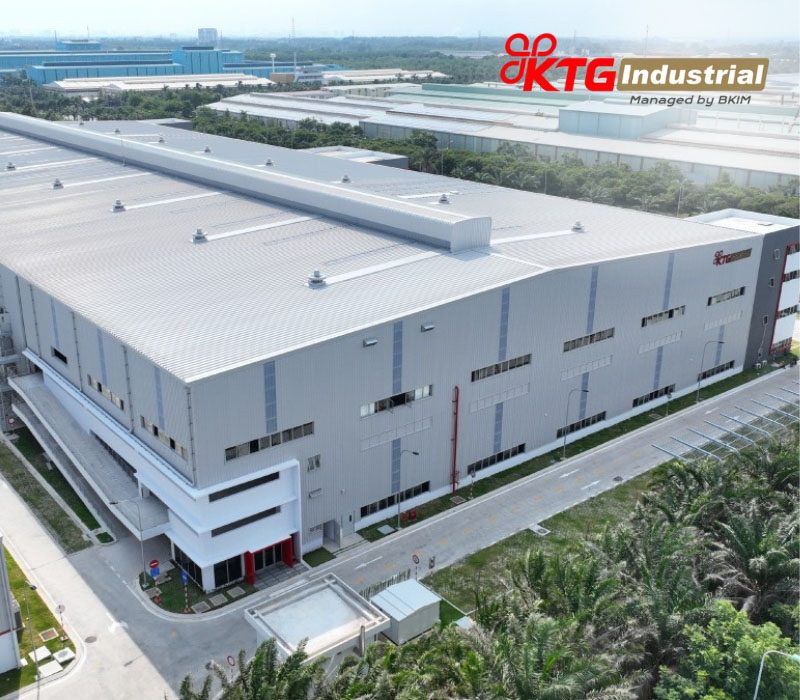
High-rise factories model is regarded as one of the most effective solutions for many businesses
High-Rise Warehouses
High-rise warehouses are storage facility models designed to maximize vertical space utilization, similar to high-rise factories. With advancements in technology and the growing demand for goods storage, high-rise warehouses have become an ideal solution for optimizing space and improving inventory management efficiency.
These facilities offer substantial storage capacity, allowing businesses to store vast quantities of goods without occupying extensive land areas. This helps companies save on rental costs and optimize land use. Additionally, high-rise warehouses streamline material handling processes—from receiving and sorting to transporting goods—thanks to smart storage systems and automated support equipment.
A major advantage of high-rise warehouses is the integration of logistics solutions, enabling businesses to manage and operate their storage facilities more efficiently. Systems such as inventory management, inbound and outbound control, and automated forklift operations can all be incorporated within these spaces, ensuring greater accuracy and speed in goods distribution.
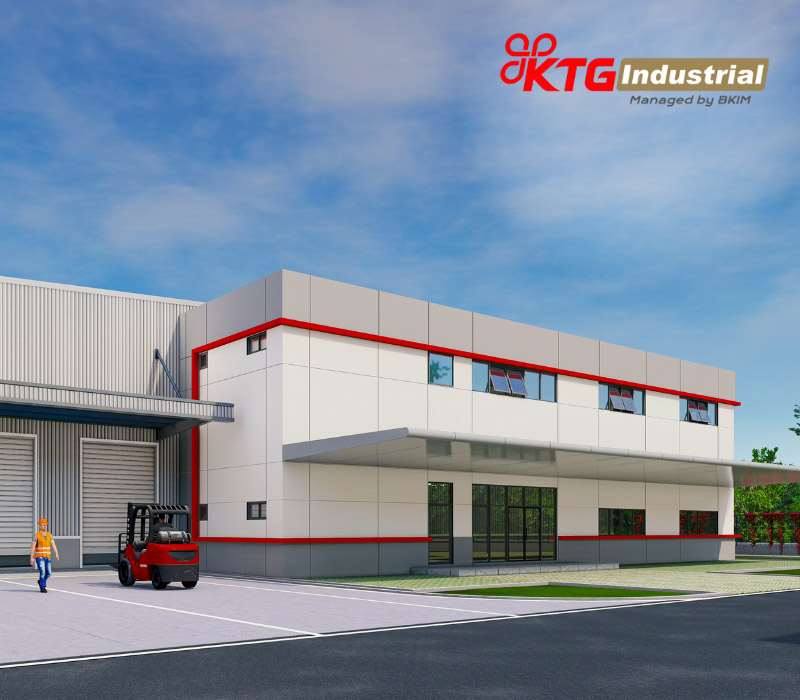
As industrial land availability continues to shrink, high-rise warehouses present an effective solution for maximizing land resources
Conclusion
The trend of developing high-rise factories in Vietnam is emerging as an optimal solution to address the challenges of limited land availability and the increasing demand from industrial sectors, e-commerce, and logistics. Driven by the strong development of transportation infrastructure, advancements in technology, and the need to enhance operational efficiency, high-rise factory models not only save space but also optimize costs and strengthen the competitiveness of businesses. Built on solid foundations and strategically located, high-rise factories are poised to remain a preferred choice for enterprises shortly, contributing to the sustainable growth of Vietnam’s economy.
Reference
- Ministry of Industry and Trade of Vietnam (2025). Thuong mai dien tu Viet Nam nam 2024: Nhung buoc tien va thach thuc. Retrieved April 14, 2025 from: https://moit.gov.vn/khoa-hoc-va-cong-nghe/thuong-mai-dien-tu-viet-nam-nam-2024-nhung-buoc-tien-va-thach-thuc.htm
- Tien Si, Thu Ha, Kim Cuong (2025). Vuot kho dua cac cong trinh giao thong trong diem ve dich trong nam 2025. Nhan Dan Newspaper. Retrieved April 14, 2025 from: https://nhandan.vn/vuot-kho-dua-cac-cong-trinh-giao-thong-trong-diem-ve-dich-trong-nam-2025-post871956.html
- Minh Tien (2025). Truc cao toc noi 3 san bay, KCN, cang bien, tao vung phat trien moi co dien tich gap 3 lan Ha Noi, 5 lan TP.HCM, 8 lan Da Nang. To quoc Newspaper. Retrieved April 14, 2025 from:https://nhipsongkinhte.toquoc.vn/truc-cao-toc-noi-3-san-bay-kcn-cang-bien-tao-vung-phat-trien-moi-co-dien-tich-gap-3-lan-ha-noi-5-lan-tphcm-8-lan-da-nang-20250310155130748.htm


